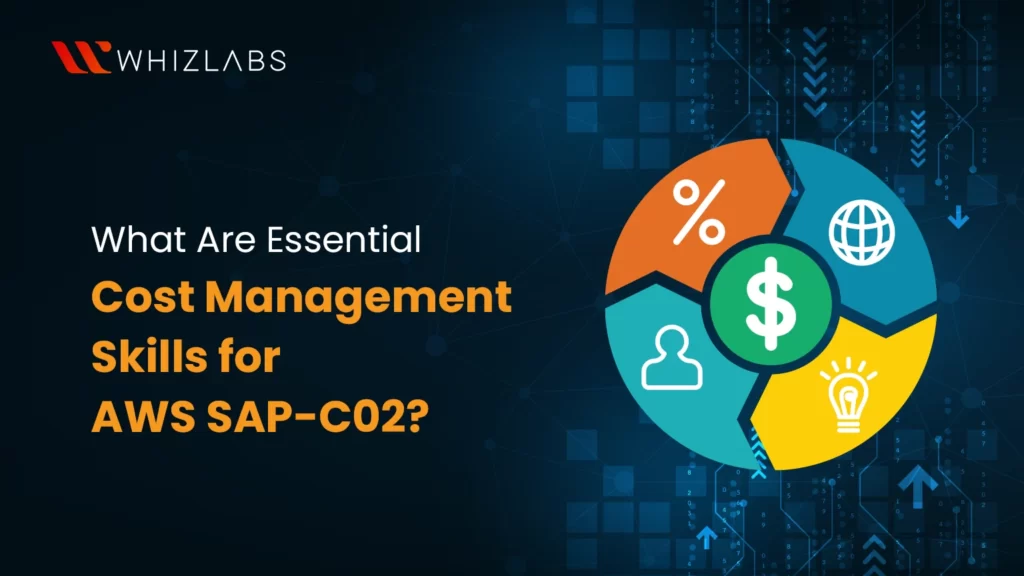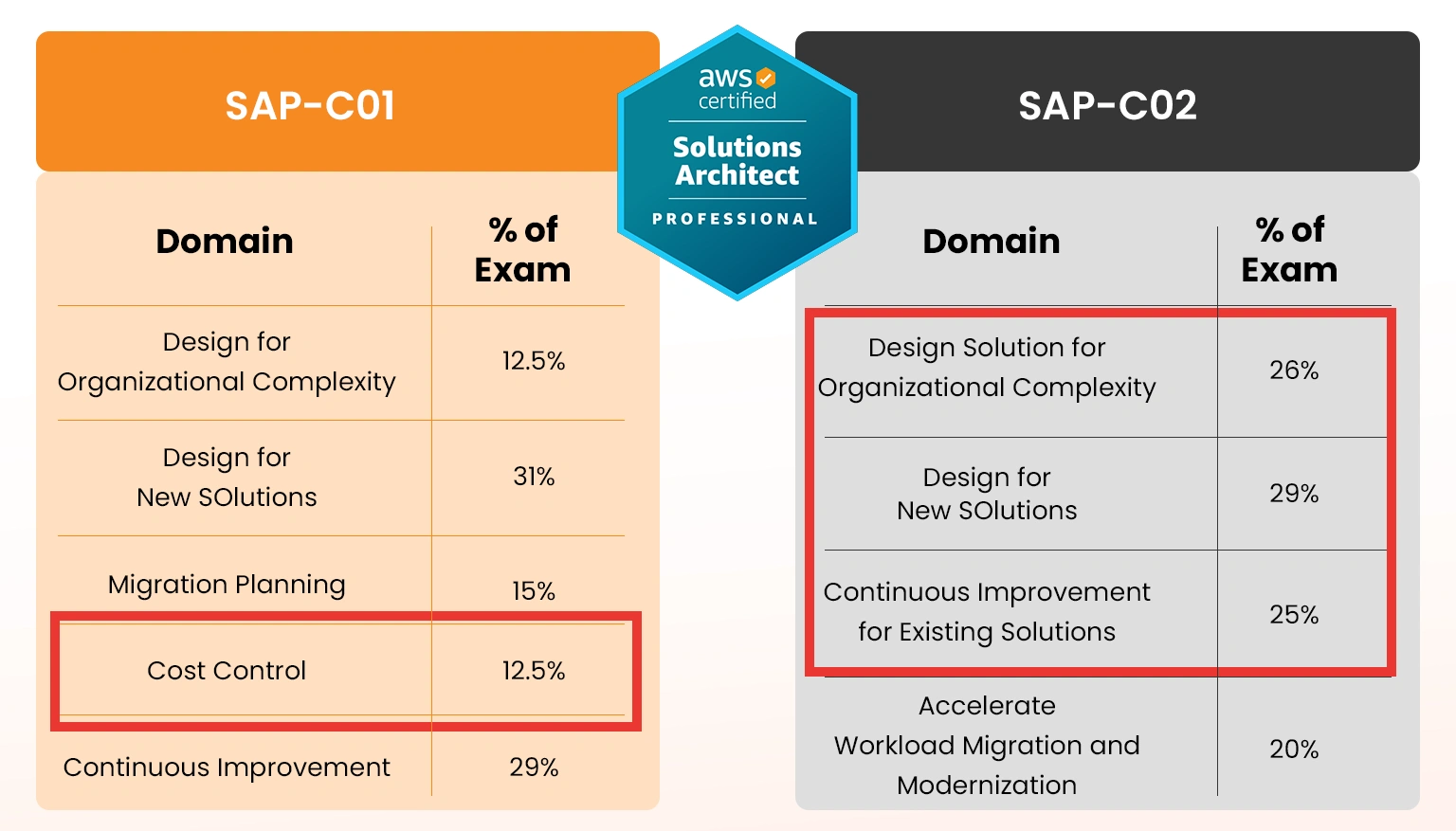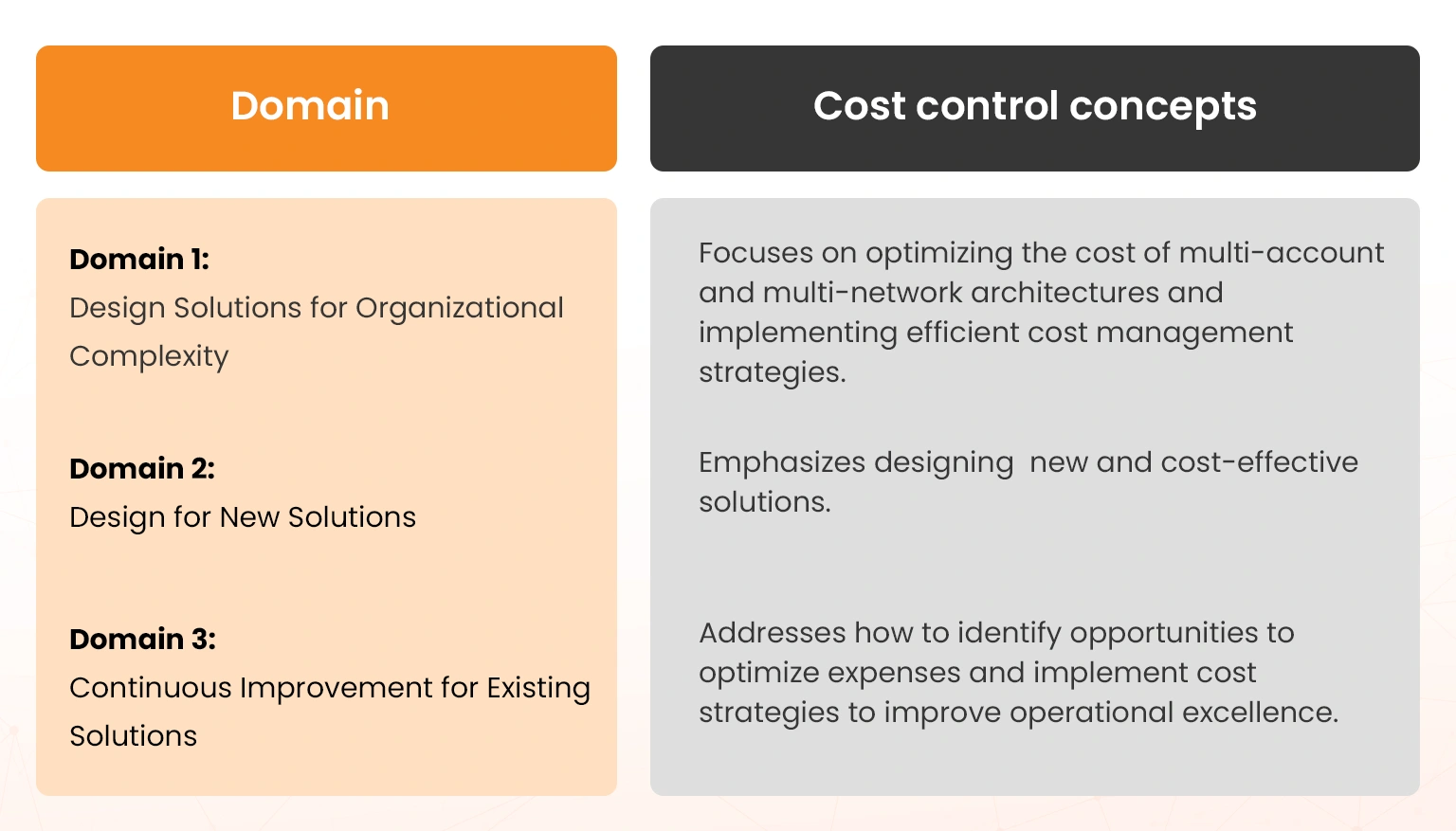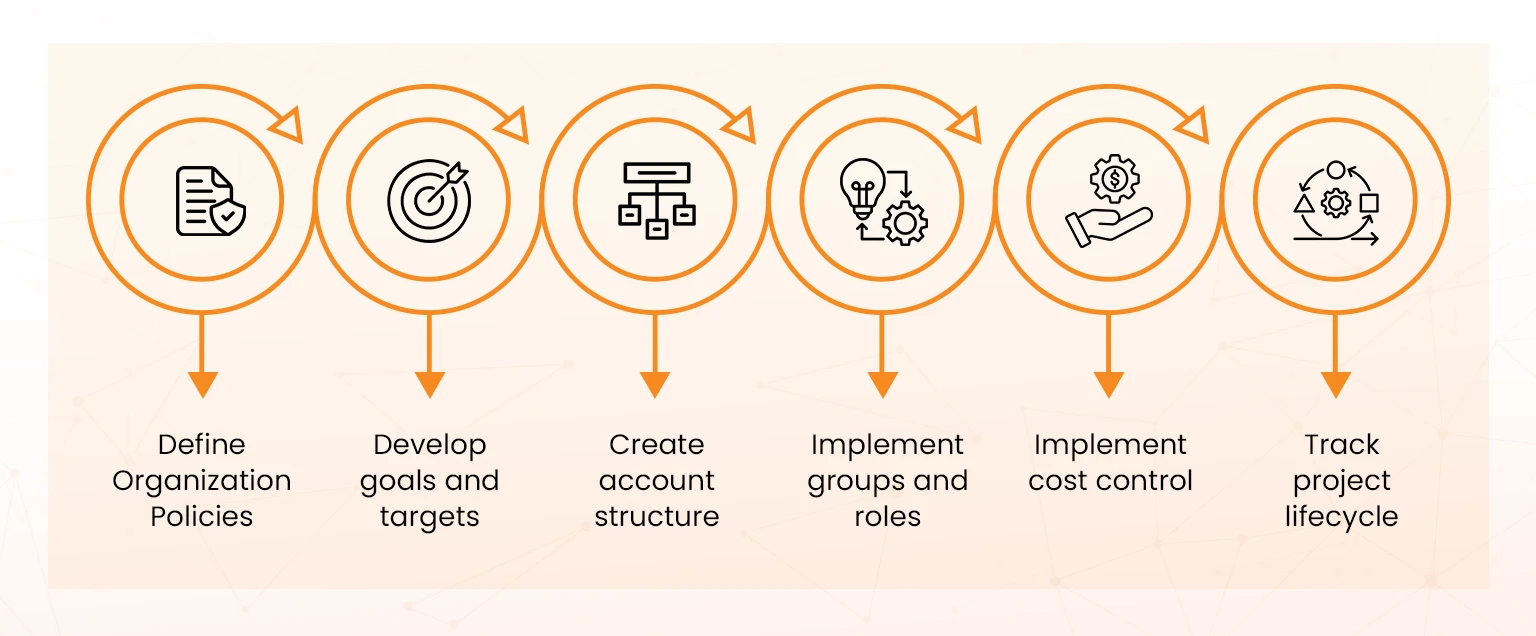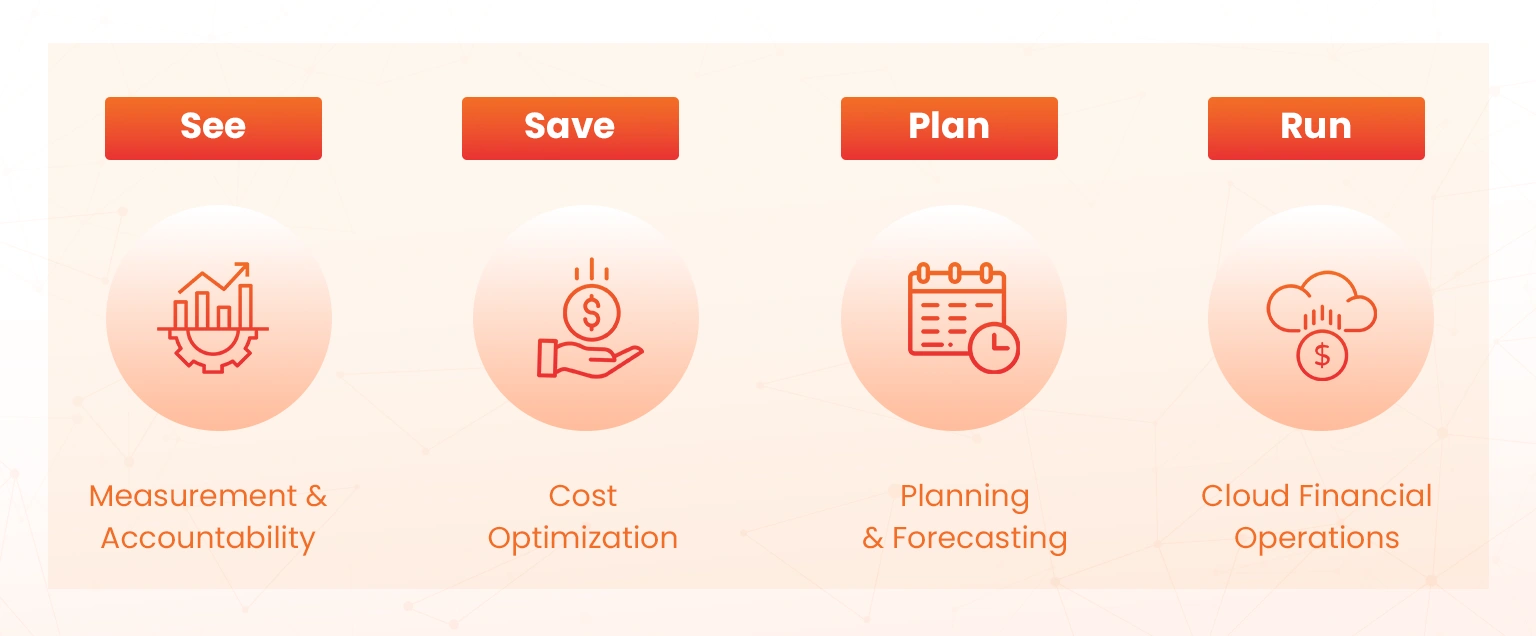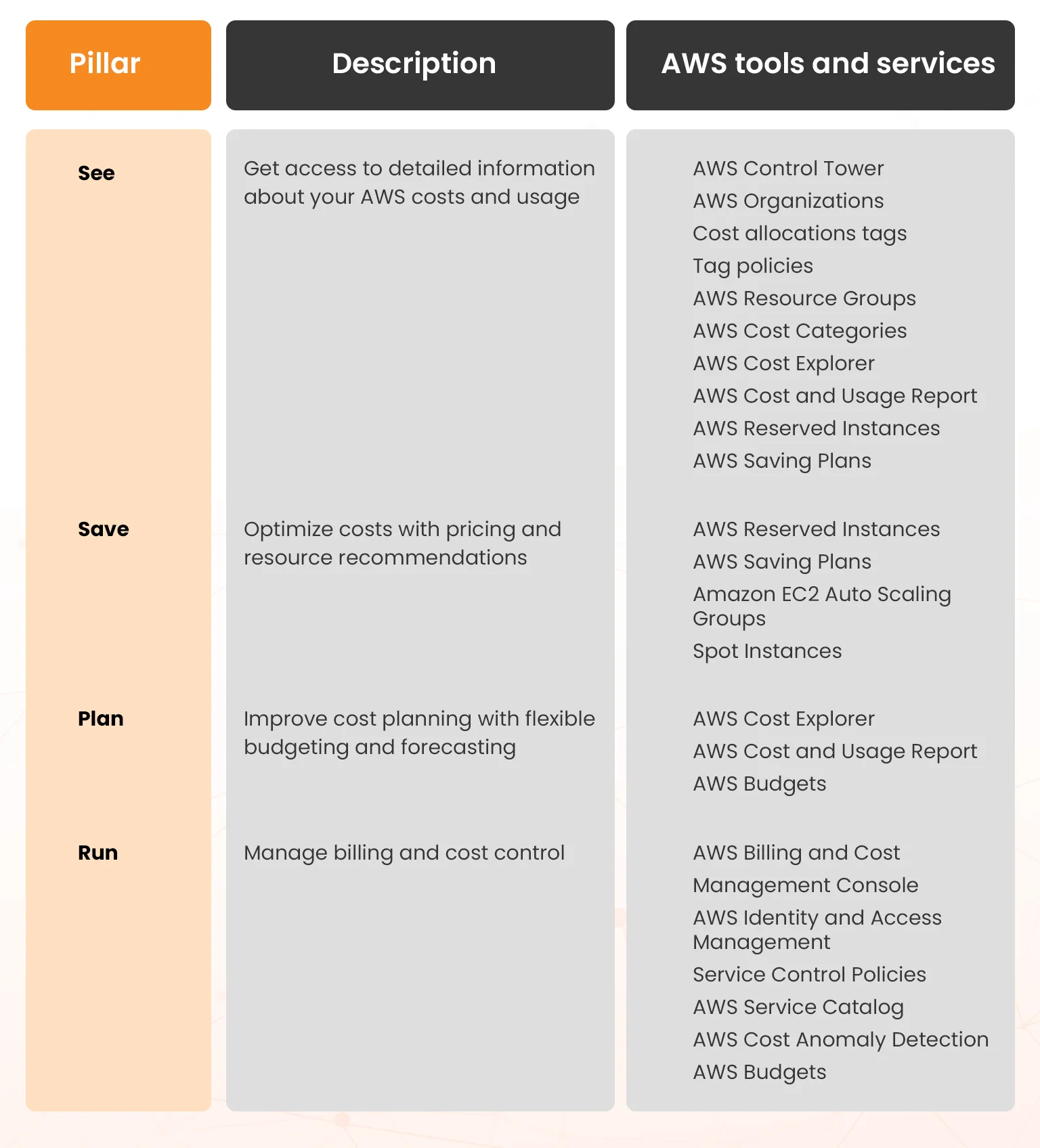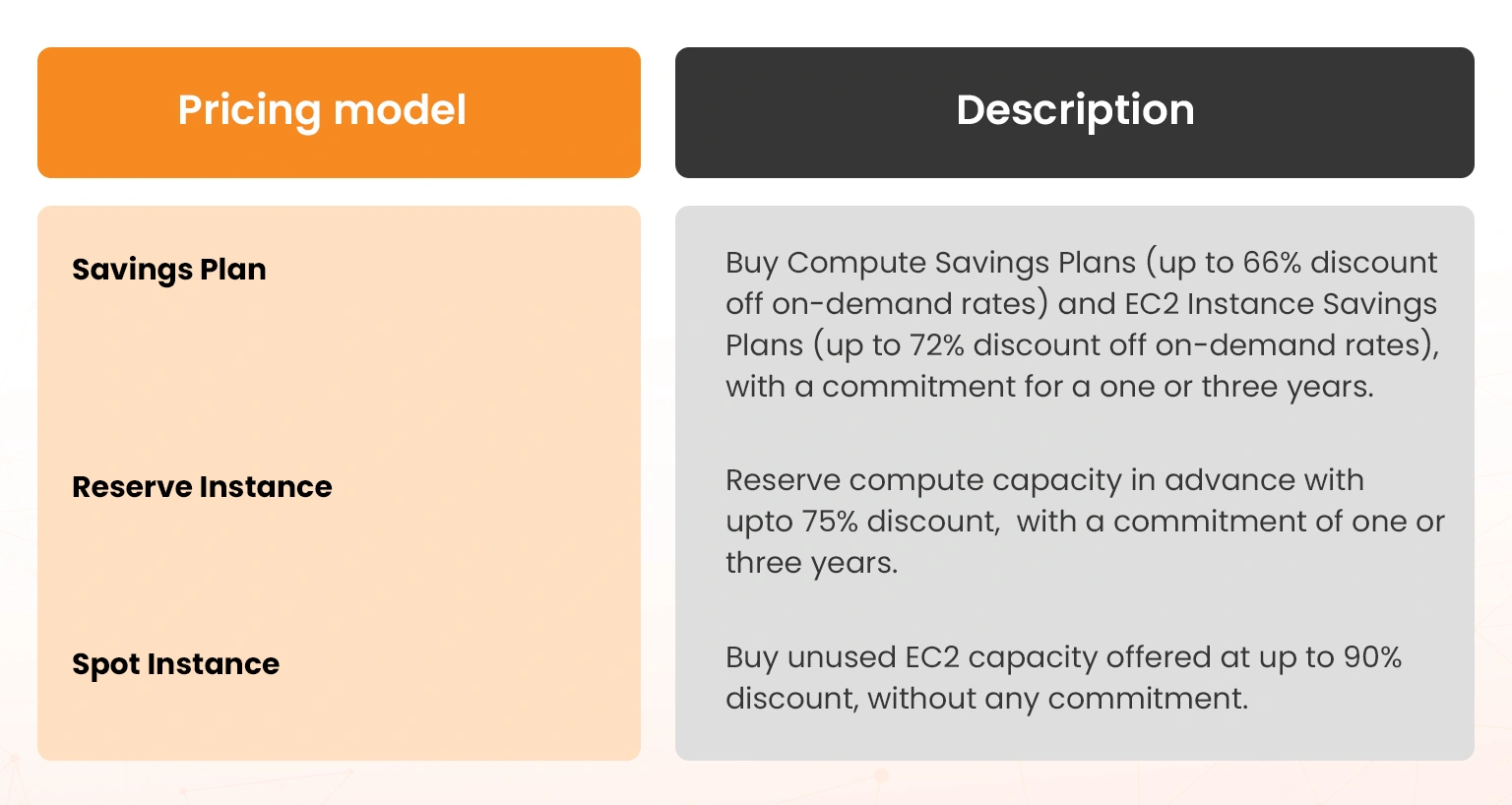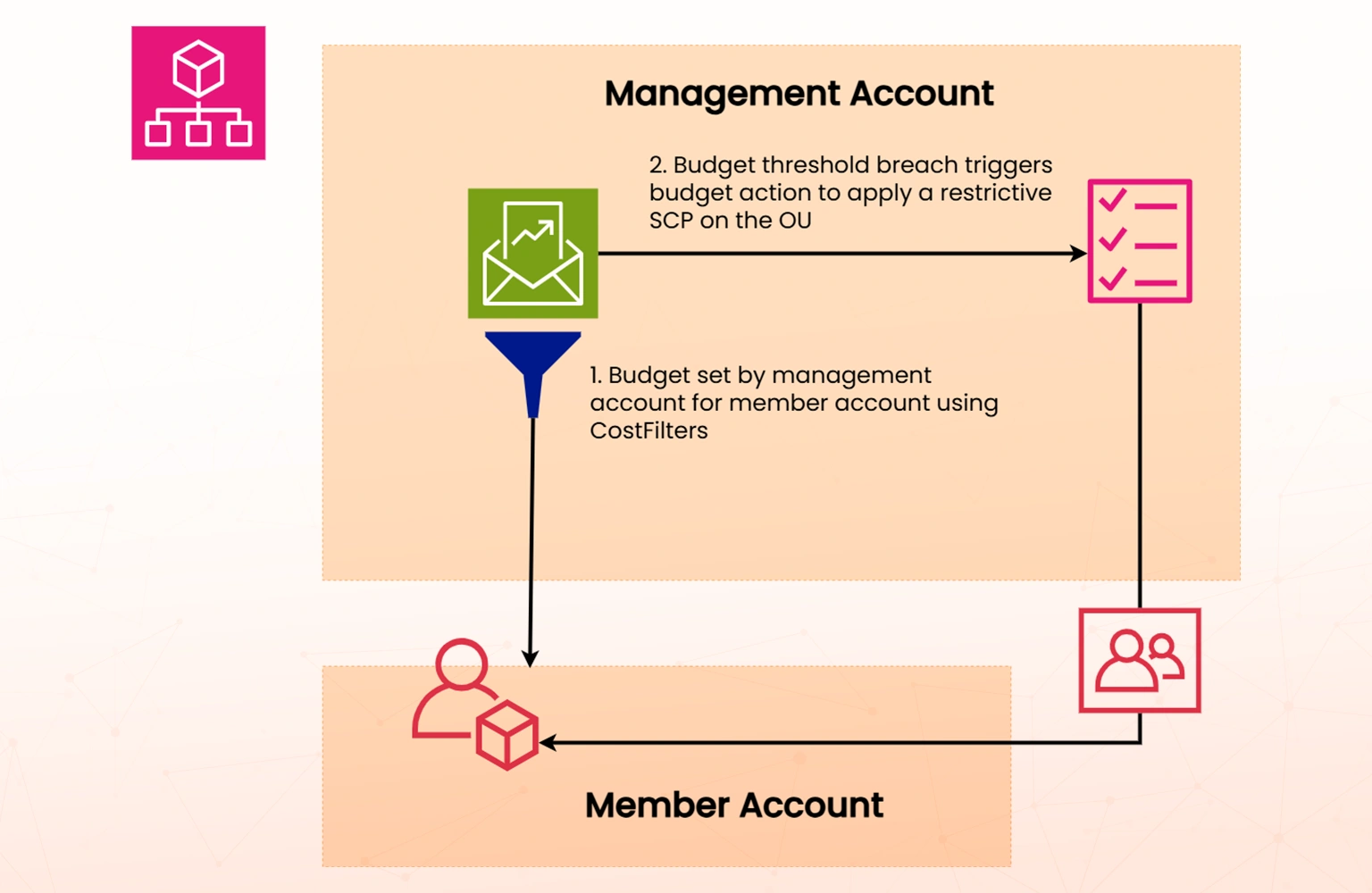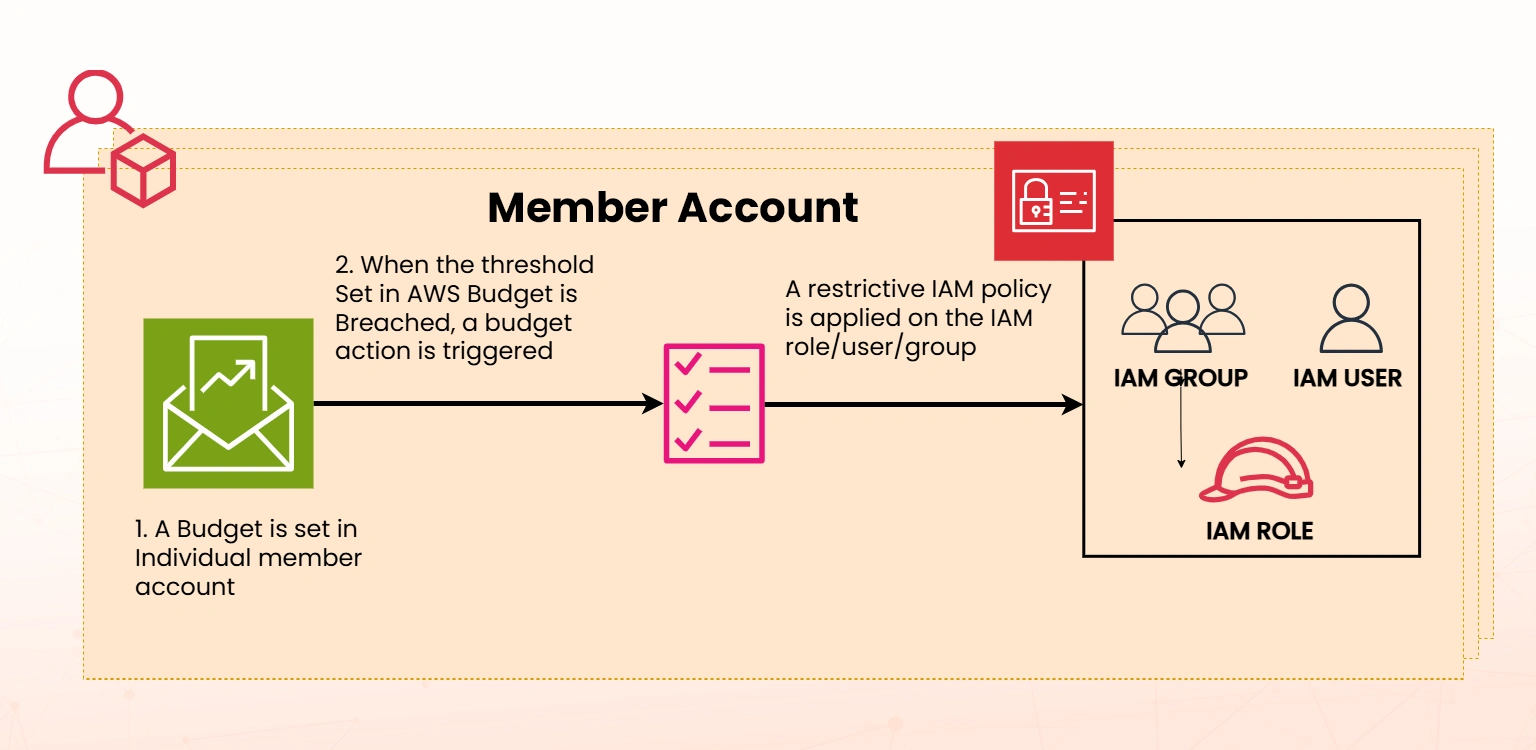In this blog, we’ll explore how the AWS SAP-C02 certification equips you with the knowledge and skills needed to address cloud cost inefficiencies. Recent studies show that up to 30% of cloud service costs are wasted, resulting in unnecessary financial losses and potential risks to business operations. This post will guide you through AWS cost management strategies and how to make the best use of available tools. The course prepares you for a comprehensive cost management process, including:
Cost Control in Cloud Solutions Architect Professional exam domain
Cost control is a major topic in the Cloud Solutions Architect Professional SAP-C02 certification exam. However, unlike SAP-C01, SAP-C02 does not have a separate domain on cost control. As cost optimization is an important pillar of any AWS solution deployment, this topic has been distributed across the other domains, prominently in domains 1,2, and 3. By integrating cost management best practices throughout the major domains, the exam ensures that architects are adept at making cost-effective choices at every stage.
AWS Cloud Cost Governance
Cloud cost governance is a strategic framework of practices, policies, and tools organizations adopt to manage, control, and optimize cloud spending. AWS recommends the following cloud cost governance path:
- Define organization policies: Define how your organization uses the cloud and how resources are managed.
- Develop goals and targets: Define cost and usage goals and targets for your organization.
- Create Account Structure: Create a structure and hierarchy of your AWS accounts to reflect your organization goals. Read how AWS Organizations can help you create an account structure.
- Implement Groups and Roles: Create logical groups and user roles within your organization to assign permissions, control usage, and prevent unauthorized access to sensitive information. See Security Pillar.
- Implement Cost Control: Take proactive steps and use AWS tools and services to monitor, manage, and reduce cloud spending.
- Track Project Lifecycle: Track, Measure, and Audit the lifecycle of projects, teams, and environments to avoid using and paying for unnecessary resources.
Mastering these areas of the AWS Cloud Cost Governance framework enables you to design cloud architectures that balance performance, cost, and security. AWS offers a range of products and services to support all areas of a governance framework.
AWS Cost Management Products: Overview
AWS offers a suite of services and tools to ensure that cloud resources are used efficiently, costs are aligned with budget goals, and wastage is minimized. These tools are categorized into four groups, which form the pillars of AWS cloud finance: see, save, plan, and run. This framework provides a comprehensive approach to cost management, beginning with gaining visibility into costs (see), identifying savings opportunities (save), forecasting expenses (plan), and maintaining continuous cost efficiency (run).
AWS supports these cloud finance pillars through a variety of services and tools. Here’s a breakdown of how each pillar is supported.
These pillars are not isolated silos but interconnected concepts that together form a holistic approach to AWS cost management. The supported AWS services can integrate seamlessly to provide a comprehensive cost-control strategy. For example, Anomaly Detection integrates with Budgets to notify you of unexpected cost spikes, and Budgets can use data from Cost Explorer to set custom budget thresholds.
Cost Management Best Practices for AWS Certifications
To prepare for the Cloud Solutions Architect Professional SAP-C02 exam, you must understand the following best practices and learn how to apply these skills in real-world scenarios.
- Understanding AWS billing and cost management tools
- Applying AWS cost optimization strategies
- Preparing budgeting techniques
- Allocating resources efficiently in AWS
Understanding AWS Billing and Cost Management Tools
A key aspect of efficient cost management is having a firm grasp of AWS billing and cost management services and tools. After deploying the cloud solution, you must have a structured process for monitoring AWS billing and managing costs. AWS provides the following tools:
- AWS Billing and Cost Management Console: Monitor and control AWS expenses, create detailed billing reports, and identify cost drivers.
- AWS Identity and Access Management (IAM): Securely manage access to AWS services and resources so that only authorized personnel can make cost-impacting changes.
- Service Control Policies (SCP): Establish governance across AWS accounts, such as limiting or prohibiting the use of expensive services that could result in high costs.
- AWS Service Catalog: Centrally manage and distribute approved products, ensuring that only cost-optimized resources are deployed.
- AWS Cost Anomaly Detection: Automatically detect unusual spending patterns and alert administrators, enabling proactive cost management.
- AWS Budgets: Set spending thresholds and send alerts when costs or usage exceed or are forecasted to exceed budgets.
- Cost Categories: Map your AWS costs to your unique internal business structures.
- Control Tower: Simplify cost management by organizing AWS accounts into a structured, multi-account environment.
Creating AWS Cost Optimization Strategies
Developing cost optimization strategies is a fundamental skill for AWS Cloud Solutions Architect Professionals. Key strategies include the following best practices.
- Increase savings with flexible pricing plans: Switch to discounted flexible pricing models, instead of on-demand rates, to reduce costs.
- Right-size Resources with AWS Compute Optimizer: Analyze your workload patterns with AWS Compute Optimizer to receive cost optimization recommendations for your compute resources. Identify opportunities to right-size instances, switch to more cost-effective instance types, or use Spot Instances to maximize savings.
- Reduce storage costs with S3 Storage Classes: Select the right S3 storage that aligns with your storage requirements and budget. Storage is one of the major cost drivers in AWS. Different S3 classes have different pricing models: S3 Standard, S3 Intelligent-Tiering, S3 Standard-IA, S3 One Zone-IA, S3 Glacier, and S3 Glacier Deep Archive.
- Automate Resource Management with Amazon EC2 Auto Scaling Groups: Scale EC2 instances dynamically with Auto Scaling Groups to adjust capacity based on demand, ensuring efficient resource usage and minimizing costs by terminating unused instances during low-demand periods.
- Identify Excess Spending with AWS Trusted Advisor: Use AWS Trusted Advisor to review your AWS environment and receive real-time recommendations for cost optimization. Identify underutilized resources, excess spending, and opportunities to adjust configurations, helping you reduce costs while maintaining performance.
Preparing Budgeting Techniques
AWS offers two budgeting techniques for multi-account AWS environments:
- Centralized budget management : The management account sets the budget for all member AWS accounts.
- Decentralized budget management: Each individual AWS member account has its budget set by its respective owner.
Best practices for centralized budgets
- Use budget actions to restrict SCPs on accounts, preventing new resource deployment. This simple approach is easy to implement but affects all accounts in the OU.
- Quarantine accounts to a predefined AWS Organizations OU using restrictive SCPs. This allows account-specific restrictions but requires an OU setup in advance for budget breaches.
Best practices for decentralized budgets
- Use AWS Budgets actions to restrict IAM policies, preventing new resource deployment. This allows granular control but can be overridden by users with higher permissions.
- Quarantine accounts to an AWS Organizations OU with restrictive SCPs, applying account-specific restrictions. However, an OU must be predefined for budget breaches.
Allocating Resources Efficiently
Efficient resource allocation refers to using the right amount of resources to meet specific requirements while minimizing waste. Architects should be adept at designing architectures that use resources efficiently.
- Supply resources dynamically using Elastic Load Balancing (ELB) and Auto Scaling: ELB helps you scale by distributing demand across multiple resources. Auto Scaling adjusts your resources to maintain consistent performance while minimizing costs based on changing demand.
- View and manage quotas using Service Quotas: Allocate resources optimally and prevent over provisioning by setting limits for your resources.
- Organize resources using Resource Groups: Logically group resources and scale them up and down based on business needs.
- Track your resources using tag policies: Apply tags to group related resources together and allocate them to specific workloads or applications.
Conclusion
Cost management skills are essential for AWS Cloud Solutions Architect Professionals SAP-C02, not only for passing the SAP-C02 exam but also for designing cost-effective and scalable cloud solutions. By mastering AWS billing and cost management tools, implementing effective cost optimization strategies, and understanding budgeting techniques, you’ll be well-equipped to manage cloud expenses efficiently. As you prepare for the AWS SAP-C02 exam, you need hands-on practice. Enrol in the Whizlabs AWS Certified Solutions Architect Professional (SAP-C02) exam course for a structured study plan, scenario-based learning, and hands-on practice. For additional hands-on experience of the services, check our AWS hands-on labs and AWS sandboxes.
- What are the career opportunities with AZ-104? - April 10, 2025
- Why Is Microsoft Entra Important for Cybersecurity? - March 26, 2025
- Why is Microsoft Fabric Essential for Data Analytics? - March 14, 2025
- How does AWS Lambda Support AI Inference and Model Execution - March 4, 2025
- How to Optimize ML Pipelines on AWS for AI Practitioners - February 17, 2025
- How to Improve Model Outcomes with AWS ML Performance Tools? - January 15, 2025
- Conditional Access in Microsoft Entra ID Enhances Security - January 9, 2025
- Why Use Azure Key Vault for Key Management & Data Protection - January 7, 2025
